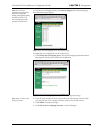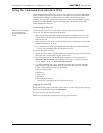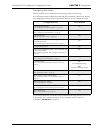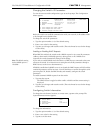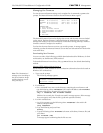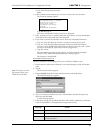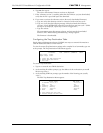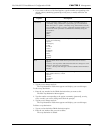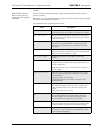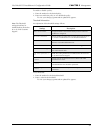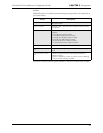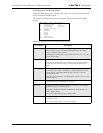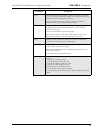
Vixel Model 335 Installation & Configuration Guide CHAPTER 3 Management
42
4. If you want to edit any of the listed options, type the number corresponding to the
desired option (community [password], severity, state, or mode) and follow the
prompts.
5. Type 5 to save changes and exit.
The Trap Destination Table menu appears and displays your saved changes.
To edit a trap destination:
1. Enter the row number for the TRAP destination that you want to edit.
The Edit Trap Destination Menu appears.
2. Type the number corresponding to the option (community [password], severity,
state, or mode) you want to change and follow the prompts.
3. Type 5 to save changes and exit.
The Trap Destination Table menu appears and displays your saved changes.
To delete a trap destination:
1. Type 3 to select the Delete TRAP destination option.
2. Enter the row number that you want to delete.
The trap destination is deleted.
Option Description
Community Sets the community string to public or private. An SNMP server has a
"community string" which is like a password to get or set information.
Most devices have a "public" community string, which enables read-only
access to MIBs, as well as a "private" community string that enables you to
read and set certain parameters via SNMP. The community strings are
case-sensitive.
Options:
public
private
Severity Select the severity level at which the traps become operational. The default
severity level is Warning.
Options:
0-Emergency
1-Alert
2-Critical
3-Error
4-Warning
5-Notice
6-Info
7-Debug
8-Mark
State The state menu choice enables the trap to become active or inactive.
Options:
1-Destroy – the trap will be deleted from the table once changes are saved.
2-Inactive – the trap is not operational.
3-Active – the trap sends messages to the host identified in the IP Address
selection.
Mode Determines whether the traps are accessed through the Event interface, the
Fibre Alliance interface, or both.
Options:
1-Event
3-FcMgmt
4-Both



